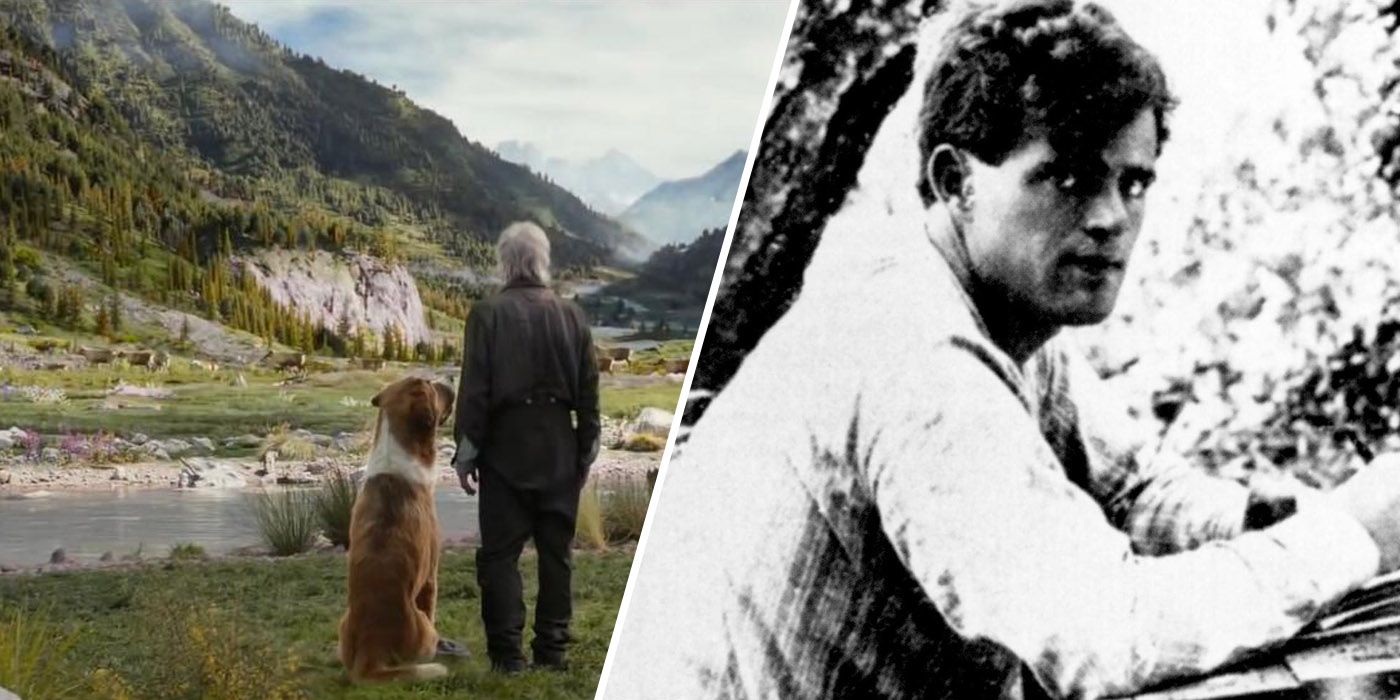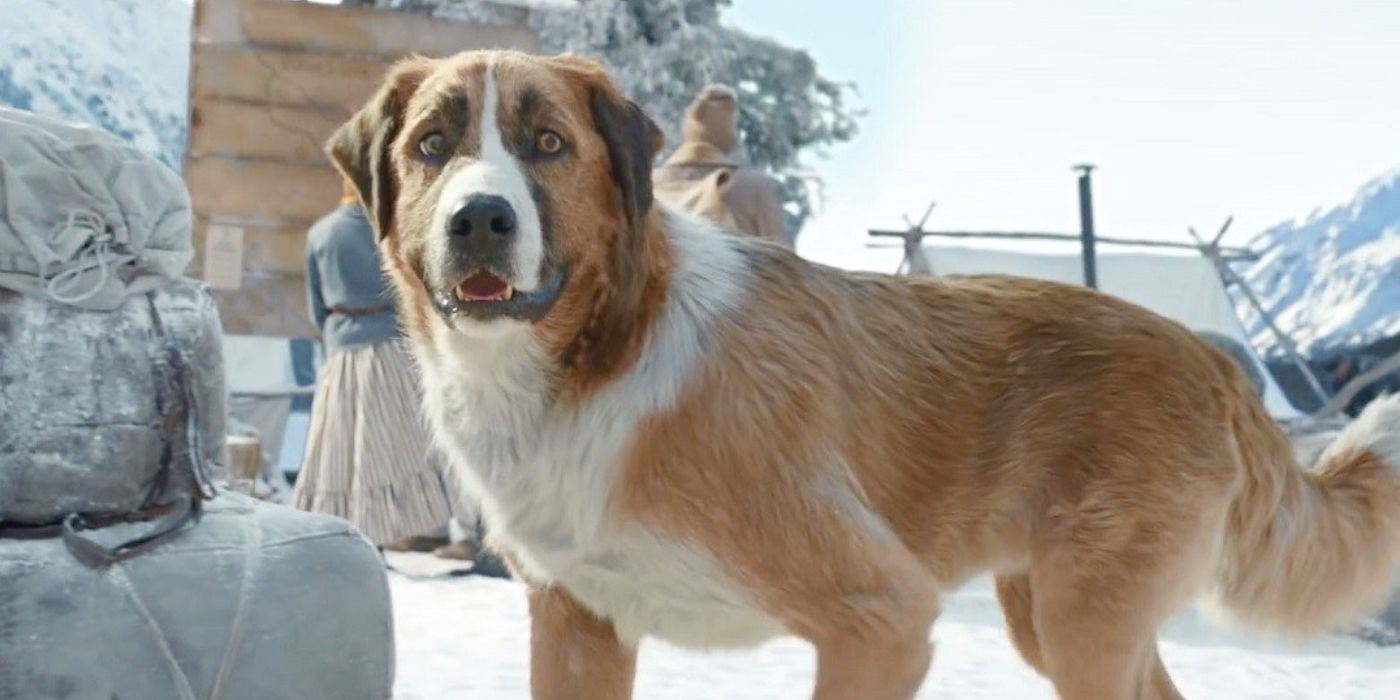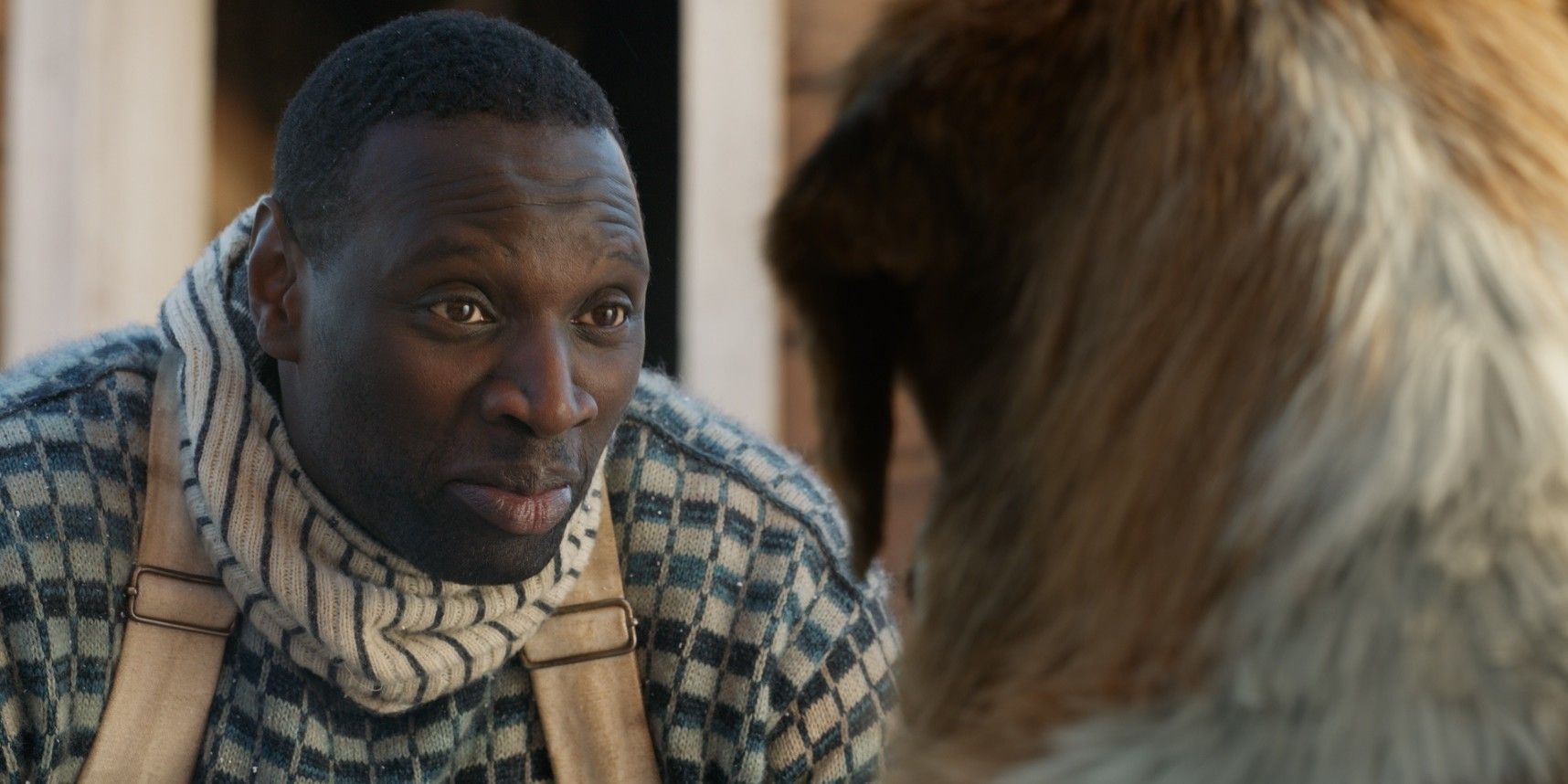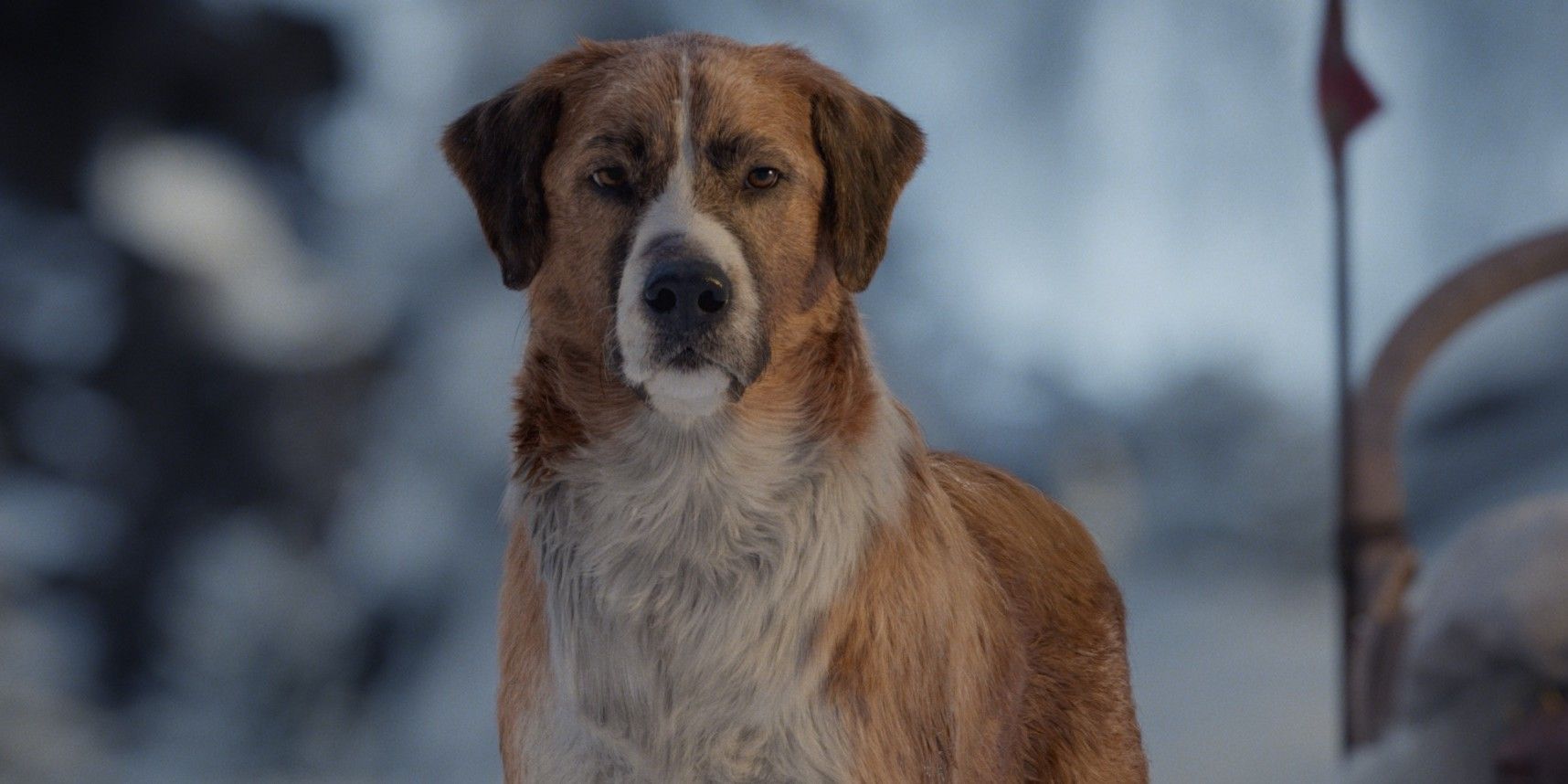The Call of the Wild is more than just a tale of a man and his dog - it's based on real life history. Directed by Chris Sanders and adapted from Jack London's 1903 novel of the same name, The Call of the Wild has arrived in theaters as just the latest big screen take on London's story, along with being an early release from the new Disney-owned 20th Century Studios logo. However, despite sharing a common source material in London's novel, it is in its technical aspects that the movie diverges greatly from previous adaptations.
Unlike past movies based on London's book, the latest version of The Call of the Wild brings the famed sled dog Buck to life via CGI, with Harrison Ford assuming the role of the novel's human protagonist, John Thornton. Given the adventurous nature of the story, this approach makes it significantly easier to fully realize the novel without putting actual dogs at risk. It also lends itself to giving the latest version of The Call of the Wild much more of a larger-than-life feel than previous adaptations of the novel (which date back as far as 1923), while seeing Harrison Ford return to an adventure-driven story as pre-production ges underway for the fifth chapter in the Indiana Jones franchise.
While telling a fictional story, The Call of the Wild nevertheless has its basis in the period in which it is set, along with the life of Jack London and his experiences during the Klondike Gold Rush. The Call of the Wild is primarily concerned with telling a compelling story and uses its history more as a basic framework to build upon, with the historical details mainly in the service of providing a setting for the story. Here are the ways in which The Call of the Wild has its foundation in history.
The Call Of The Wild's Buck Is Based On A Real Life Dog
Prior to his literary career, Jack London had lived the life of a vagrant, departing in 1897 for the Klondike region of the Canadian Yukon during the Klondike Gold Rush. His experiences in the Yukon not only served as a major journey of self-discovery for London, but also would plant the seed for his literary career. London's encountering the sled dogs that were heavily utilized during the Gold Rush would prove especially influential on him in this regard.
During his time in Klondike, two brothers named Marshall Latham Bond and Louis Witford Bond were London's landlords in the log cabin he would tenet, with London developing an affinity for the brother's dog, a St. Bernard-Scotch Collie mix. London himself would later confirm that their dog had served as the model for Buck in The Call of the Wild. While Omar Sy and Cara Gee's Perrault and Mercedes are the only real human characters of comparable significance to Harrison Ford's Thornton in the new film, the real-life influence of Buck remains an integral element in every adaptation of London's novel. However, this wasn't the only aspect of London's experiences in the Klondike Gold Rush that served as a major influence on his famous novel.
The True Story That Inspired Jack London & The Call Of The Wild
London's experiences navigating the Yukon River would prove equally influential on the novel. Having contracted scurvy, London elected to return to his native California, navigating 2,000 miles through the Yukon River to reach St. Michael, Alaska, and London's arrival there would prove instrumental in the novel's genesis. Klondike was only accessible from Alaska through a mountain pass known as the White Pass, which also carried the nickname of the "Dead Horse Trail" - so named for the frequency with which horses were known to die on attempts to climb the pass. This led to sled dogs being used instead, and London's memory of these experiences would stick with him in his return to California.
Following London's return to California, he had trouble finding employment. Eventually, London managed to sell a short story about a dog named Batard who kills his own master to Cosmopolitan Magazine, with the outlet publishing the story under the title of "Diablo - A Dog". However, his experiences in Alaska during the Klondike Gold Rush, along with a desire on his part to pen a story with a more favorable depiction of dogs, would lead to the creation of London's signature novel. This ultimately leads back to the question of how closely the newest big screen version of The Call of the Wild adheres to history. With the movie being less concerned with retelling actual events than the recent dog-centric movie Togo, its use of the Klondike Gold Rush serves more as a background for its own story.
What The Call Of The Wild Gets Right About The Klondike Gold Rush
Though seemingly better suited as a Disney+ release, the overall scale of The Call of the Wild allows the movie to zero in on many historical locations central to the Klondike Gold Rush, and these begin with the role that ports played in the period. A major point that The Call of The Wild nails is the centralized role of Skagway, Alaska in the Klondike Gold Rush. Skagway was one of the primary ports utilized by prospectors during the Gold Rush, and the location serves as a notable presence within both London's novel and the film itself.
Both the Yukon River and the White Pass are also elemental locations to the movie's story, while the extremely competitive nature of gold prospecting during this time also serves as the basis for the movie's major conflict. It wasn't uncommon for prospectors to leave the Yukon empty-handed, and this fuels the attitude of the movie's antagonist Hal, played by Dan Stevens, who insists on continuing headlong into the Yukon despite warnings of thawing ice sheets from John Thornton. Hal then comes to suspect that Thornton is attempting to prevent him from uncovering a hidden stash of gold, which plays into the third act as Thornton finds a renewed sense of peace and purpose with Buck in the wild.
Like the novel that inspired it, The Call of the Wild has its basis in history without striving to be a purely historical document, with the movie itself seeing relatively positive reviews - including from Screen Rant's own Sandy Schaefer. Nevertheless, the latest adaptation of Jack London's seminary novel makes notable efforts to adhere to the facts of the Klondike Gold Rush wherever possible, while telling a story of a dog and a man displaced from the lives they once knew bonding in an adventure in the wilderness. As an historical adventure story, The Call of the Wild gets the job done while sprinkling in an overall respectable amount of real-life context to fully bring the story of Jack London's novel to life.




